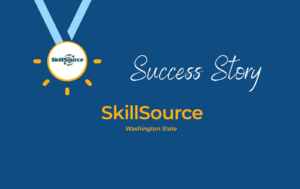In honor of CTE Month, we hosted a panel discussion to learn about innovative ways CTE programs prepare students for today’s complex and ever-changing world of work. Here are some key takeaways that our CareerScope team gained from the conversation.
Thanks to Mary Beth Smith, Ariana Ramirez, Joy MacMillan and Craig Wilkinson for sharing your thoughts!
Takeaway #1 – CTE statistics
- According to the US Dept of Education, there are about 12 million high school and college students enrolled in CTE across the nation
- Data shows that eight years after high school graduation, people who complete CTE programs have higher full-time employment rates and higher median incomes than their non-CTE peers
- With the U.S. facing a shortage of 6.5 million skilled workers over the next decade in key industries, CTE is more relevant now than ever before
Takeaway #2 – Today’s CTE programs are innovative
When Central Westmoreland Career and Technical Center saw enrollment decrease in their machine trades program, they partnered with local industry to create Phoenix Manufacturing, which combined robotics and machine trades into a new robotics engineering program. Students get in-house work-based learning experiences using state-of-the-art equipment donated by the companies who also provide the required training. The program is mutually beneficial – students complete actual work for the companies and the companies build their recruitment pipeline.
Takeaway #3 – Partnerships between CTE and industry are a key strategy for success
- Occupational Advisory Committees, made up of local business and industry members, are a vital link between CTE programs and business and industry. OAC members help ensure that CTE programs are responsive to the ever-changing industry needs and standards by providing information on the tools, equipment and skills students need to compete and succeed within their chosen industry.
- York County School of Technology and Harley-Davidson are a great example of a CTE and Industry partnership: Harley-Davidson’s new employees in precision machining and collision repair are trained at the YCST facilities, and YCST students participate in cooperative education opportunities at the Harley-Davidson facilities.
Takeaway #4 – Debunking CTE myths
Myths about CTE are still prevalent among the general public. Here are some examples:
- CTE students struggle with traditional high school curriculum
- CTE programs do not line up with high paying jobs
- CTE students are primarily male
CTE professionals strive to spread the facts about how CTE is relevant and vital for modern-day students. CTE is a comprehensive and equitable program that has implications far beyond secondary education.
To summarize: CTE is good for students, good for businesses, and good for communities.
You can watch the recording of Rethinking CTE to Meet Today’s Labor Market here.














